New reference guide includes largest choice of current sensors in world today
11th February 2008
Source:
Micro-Epsilon (UK) Ltd
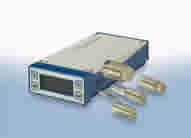
A new guide is now available from sensor manufacturer Micro-Epsilon on the company’s non-contact, wear-free eddy current displacement sensors.
With the largest choice of custom and standard eddy current sensors in the world today, Micro-Epsilon has now brought together the 28 most common variants of its eddyNCDT sensor range and combined them into an easy-to-use reference guide for customers.
Eddy current displacement sensors measure distances, displacements or position of any electrically conductive target. Micro-Epsilon’s eddyNCDT range offers a number of advantages for the user, including very stable measurements, high resolution and linearity, excellent temperature range and stability, high measurement rates and are sealed to IP67. Unique to the eddyNCDT range is Micro-Epsilon’s patented ‘active temperature compensation’ feature and field calibration capability.
Eddy Current Principle
The eddy current measurement principle is an inductive measuring method based on the extraction of energy from an oscillating circuit. This energy is required for the induction of eddy currents in electrically conductive materials.
A coil is supplied with an alternating current, which causes a magnetic field to form around the coil. If an electrically conducting object is placed in this magnetic field, eddy currents are induced, which form an electromagnetic field according to Faraday’s Induction Law. This field acts against the field of the coil, which also causes a change in the impedance of the coil. The controller calculates the impedance by considering the change in amplitude and phase position of the sensor coil.
Micro-Epsilon’s eddyNCDT 3300 is ideal for harsh ambient conditions or where maximum precision is required. Various sensor models are available which cater for all application requirements. For example, the miniature eddyNCDT range uses variable coil geometry and innovative production technologies in order to offer customers a sensor that has installation dimensions of less than 2mm.
Pressure-resistant versions are available up to 2,000 bar. Operating temperatures are from –50°C up to 235°C and robust, IP67 versions are also available. An active sensor, controller and cable compensate for temperature fluctuations, offering extreme temperature stability of 0.015%/°C. Measurement ranges are from 0.4mm up to 80mm, linearity is 0.2% and resolution is 0.01% of the measurement.
The eddyNCDT 3300 measurement system consists of a sensor, sensor cable and a controller with adapter board. This design means it is possible for the user to operate all eddyNCDT sensors with only one controller. The adapter board represents the link between sensor, cable and the electronics. The sensor type used, the cable length and the target material are stored on this board. It adapts the various sensors to the oscillator and demodulator standard circuits and also contains the settings for temperature compensation. When changing or replacing a sensor, only the sensor, sensor cable and adapter board need to be replaced. The adapter board also enables the user to easily adapt the sensor for different applications, for example, if the target material, size or shape changes.
A new controller is now available that enables the user to synchronise the system for multi-channel applications. The MCT304 multi-channel platform is available for thickness and displacement measurements with up to four channels. Up to four controllers can be integrated in a single MCT platform. The platforms can be synchronised with each other, whereby the simultaneous operation of any number of eddyNCDT sensors is possible. In order to compensate for opposing sensor influences, the systems are synchronised by means of a master/slave synchronisation cables.
Potential applications for the eddyNCDT 3300 include automotive inspection systems, tensile strength testing in steelworks, measuring the thickness of foil, compressor/turbine gap, shaft displacement and edge control. In automotive Research and Development, the miniature sensors are used extensively. Applications include measurement of valve stroke, injection needle movement, cylinder head breathing, lubricating gap, oil film thickness, crankshaft concentricity and axial movement of the crankshaft.
Eddy current displacement sensors measure distances, displacements or position of any electrically conductive target. Micro-Epsilon’s eddyNCDT range offers a number of advantages for the user, including very stable measurements, high resolution and linearity, excellent temperature range and stability, high measurement rates and are sealed to IP67. Unique to the eddyNCDT range is Micro-Epsilon’s patented ‘active temperature compensation’ feature and field calibration capability.
Eddy Current Principle
The eddy current measurement principle is an inductive measuring method based on the extraction of energy from an oscillating circuit. This energy is required for the induction of eddy currents in electrically conductive materials.
A coil is supplied with an alternating current, which causes a magnetic field to form around the coil. If an electrically conducting object is placed in this magnetic field, eddy currents are induced, which form an electromagnetic field according to Faraday’s Induction Law. This field acts against the field of the coil, which also causes a change in the impedance of the coil. The controller calculates the impedance by considering the change in amplitude and phase position of the sensor coil.
Micro-Epsilon’s eddyNCDT 3300 is ideal for harsh ambient conditions or where maximum precision is required. Various sensor models are available which cater for all application requirements. For example, the miniature eddyNCDT range uses variable coil geometry and innovative production technologies in order to offer customers a sensor that has installation dimensions of less than 2mm.
Pressure-resistant versions are available up to 2,000 bar. Operating temperatures are from –50°C up to 235°C and robust, IP67 versions are also available. An active sensor, controller and cable compensate for temperature fluctuations, offering extreme temperature stability of 0.015%/°C. Measurement ranges are from 0.4mm up to 80mm, linearity is 0.2% and resolution is 0.01% of the measurement.
The eddyNCDT 3300 measurement system consists of a sensor, sensor cable and a controller with adapter board. This design means it is possible for the user to operate all eddyNCDT sensors with only one controller. The adapter board represents the link between sensor, cable and the electronics. The sensor type used, the cable length and the target material are stored on this board. It adapts the various sensors to the oscillator and demodulator standard circuits and also contains the settings for temperature compensation. When changing or replacing a sensor, only the sensor, sensor cable and adapter board need to be replaced. The adapter board also enables the user to easily adapt the sensor for different applications, for example, if the target material, size or shape changes.
A new controller is now available that enables the user to synchronise the system for multi-channel applications. The MCT304 multi-channel platform is available for thickness and displacement measurements with up to four channels. Up to four controllers can be integrated in a single MCT platform. The platforms can be synchronised with each other, whereby the simultaneous operation of any number of eddyNCDT sensors is possible. In order to compensate for opposing sensor influences, the systems are synchronised by means of a master/slave synchronisation cables.
Potential applications for the eddyNCDT 3300 include automotive inspection systems, tensile strength testing in steelworks, measuring the thickness of foil, compressor/turbine gap, shaft displacement and edge control. In automotive Research and Development, the miniature sensors are used extensively. Applications include measurement of valve stroke, injection needle movement, cylinder head breathing, lubricating gap, oil film thickness, crankshaft concentricity and axial movement of the crankshaft.
Similar articles
More from Micro-Epsilon (UK) Ltd
- Weld seam inspection on pipes 13th July 2011
- Non-contact sensors measure thickness and flatness of solar glass panels 17th December 2009
- High resolution portable surface profiler uses confocal displacement sensors 17th December 2009
- Draw-wire sensors used for wind turbine rotor blade testing 17th December 2009

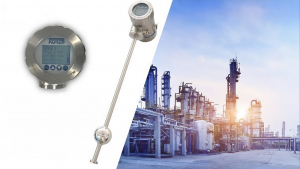
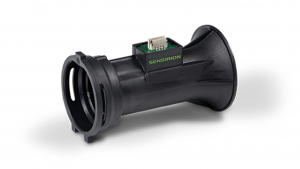
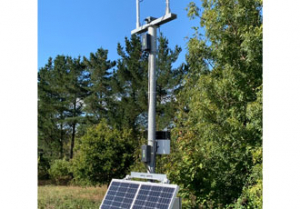
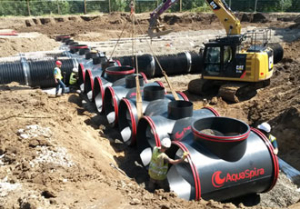







Write a comment
No comments